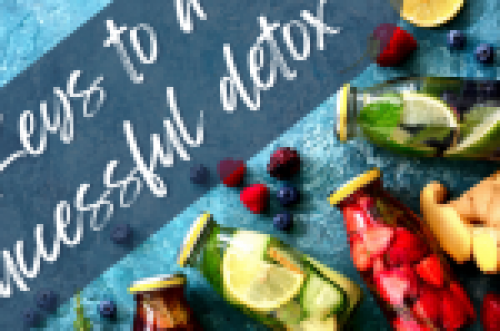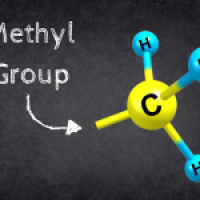Successful Detox and Liver Cleanse Tips and Tricks

Article Summary
The word “detox” is everywhere these days, with many people recommending smoothies and fasting as ways to cleanse the body. But before jumping on this trend, it’s important to understand what detoxification actually is and how to do it safely. Detoxification isn’t just a fad; it’s a natural process the body uses to eliminate toxins. The liver plays a central role, breaking down harmful substances in two phases to make them easier for the body to remove. However, detox can be complex and needs to be done carefully to avoid making the body feel worse instead of better.
The detoxification process involves the liver transforming toxins into less harmful substances in two main phases. In Phase I, the liver uses enzymes to make toxins more reactive, but sometimes these new compounds can be even more harmful. In Phase II, the liver neutralizes these toxins and makes them water-soluble so they can be excreted safely. Challenges can arise if Phase II can’t keep up with Phase I, leading to harmful intermediates building up in the body, which can cause symptoms like headaches or fatigue, known as the Herxheimer Reaction, or “herxing.” That’s why it’s important to have professional guidance to make sure both phases are working well.
A safe detox requires working with a qualified health professional who understands your unique needs and can help you avoid common mistakes. Key strategies include eating a healthy diet rich in vitamins and minerals, staying hydrated, eating fiber, and getting enough sleep. Detox isn’t just about temporarily avoiding unhealthy things; it’s a lifestyle change that involves reducing toxin exposure and consistently choosing healthy options. With the right approach, detox can improve health, but it should always be done carefully to avoid overwhelming the body.
Want to know more details?
Check out the full article below.
Successful Detox and Liver Cleanse Tips and Tricks
You can’t open up Instagram, TikTok, or Pinterest these days without running across the word “Detox” about 15 times per minute. It seems like everyone is on the “detox train” and, according to them you’d better get on it, too. Are they right? What about their smoothie and fasting suggestions? Are they safe? Do they make practical sense from a true health perspective? Or is all of this “detox talk” just a fad? Let’s take a look at what detox really is and the safe way to go about it.
Undertaking a strategic detoxification protocol can be a powerful tool for optimizing health. However, embarking on a detox journey requires more than just commitment; it requires an understanding of the body’s detoxification processes and personalized guidance to navigate potential challenges. Likewise, it requires commitment from the person doing the detox.
Understanding Detoxification
Detoxification, from a functional medicine perspective, represents more than just a fleeting health trend—it’s a crucial process that supports the body’s natural ability to manage and eliminate toxins. Functional medicine places particular emphasis on understanding the physiological mechanisms underlying detoxification to effectively support individuals seeking improved health outcomes. This article explores the phases of detoxification, the central role of the liver, and the challenges that can arise, with a focus on the importance of safely undertaking detoxification under professional supervision.
Understanding Detoxification: The Role of the Liver
The human body is continuously exposed to an array of toxins from the environment, food, water, and even from metabolic waste products generated internally. To protect the body from potential harm, these toxins must be neutralized and excreted effectively. The liver is the main organ responsible for detoxification, performing its function through two well-coordinated phases: Phase I and Phase II detoxification.
-
Phase I: Liberation of Toxins
The liver’s detoxification process begins with Phase I, which involves the transformation of toxins into intermediate forms. This phase primarily uses a family of enzymes known as cytochrome P450. These enzymes oxidize, reduce, or hydrolyze toxins to make them more reactive, preparing them for further processing. Although this phase helps to start breaking down toxins, it often produces intermediary compounds that can be more reactive—and potentially more harmful—than the original toxins. -
Phase II: Conjugation and Neutralization
In Phase II, the reactive intermediates from Phase I are further processed to become water-soluble, facilitating their excretion via bile or urine. Phase II is also known as the conjugation phase, where various pathways (including methylation, sulfation, and glucuronidation) work to neutralize these reactive compounds, rendering them harmless. Effective Phase II detoxification is essential to prevent these intermediates from accumulating and potentially causing cellular damage.
Challenges in the Detoxification Process
Although the body is well-equipped to handle toxin removal, many individuals experience challenges, particularly in Phase II detoxification. When Phase I activity outpaces Phase II, a backlog of reactive intermediates can lead to adverse symptoms. This imbalance is often compounded by nutrient deficiencies, genetic predispositions, lifestyle factors, or excessive toxic burdens.
- The Jarisch–Herxheimer Reaction (Herxing)
One of the consequences of an imbalance in detoxification is the occurrence of the Jarisch–Herxheimer Reaction, colloquially known as “herxing.” This phenomenon occurs when the body is overwhelmed by the release of toxins and cannot efficiently neutralize them. Symptoms of herxing may include headaches, fatigue, muscle aches, or even skin reactions, and are typically associated with the body’s immune response to increased toxic burden. It is a clear indicator that Phase II detoxification pathways are underperforming, resulting in an accumulation of intermediate toxic products.
Functional Medicine Detox Strategies
Functional medicine approaches detoxification by emphasizing an individualized, holistic plan that prioritizes both Phase I and Phase II efficiency. Here are several key strategies:
-
1. Nutrition and Micronutrient Support
Nutrition plays a vital role in optimizing detoxification. Phase I requires a wide range of vitamins and minerals, such as vitamins B2, B3, B6, B9, B12, and antioxidants like vitamin C. For Phase II, compounds like amino acids, sulfur-containing foods (e.g., garlic and cruciferous vegetables), and dietary fiber are crucial for conjugation pathways. Functional medicine practitioners often recommend targeted nutritional supplementation to support both phases of detox. -
2. Antioxidant Support
Since Phase I detoxification generates reactive intermediates, it increases oxidative stress. Therefore, incorporating antioxidant-rich foods such as berries, green leafy vegetables, and nuts helps neutralize these free radicals, protecting cellular structures from damage. Glutathione, a potent endogenous antioxidant, plays a central role in this process and is frequently supported through dietary or supplemental means in functional medicine. -
3. Gut Health Optimization
The gut is a significant route for toxin elimination, particularly via bile excretion into the stool. Ensuring regular bowel movements and a balanced gut microbiota are fundamental to successful detoxification. Dietary fiber, probiotics, and prebiotics are often used to enhance gut function, thereby facilitating toxin excretion. -
4. Avoiding Overwhelm of Detox Systems
A crucial tenet of functional medicine detoxification is avoiding overburdening the detox pathways. This can be achieved by gradually reducing exposure to environmental toxins (e.g., avoiding processed foods, synthetic chemicals, and pollution) and ensuring adequate hydration to support kidney function in excreting water-soluble toxins.
The Importance of Qualified Guidance
Detoxification is a complex physiological process, and attempting to detox without proper guidance can do more harm than good. Functional medicine emphasizes the importance of individualized care, taking into account each person’s unique biochemistry, current health status, and lifestyle factors. A trained practitioner can provide a safe plan that optimally supports both phases of detoxification, thereby minimizing the risk of adverse reactions like the Jarisch–Herxheimer Reaction. Moreover, lab tests may be utilized to assess liver function, micronutrient levels, and toxic burdens, allowing for a highly tailored detox strategy.
The Safe Way to Detox
1. Work with a Qualified Practitioner
The first step in a safe detox journey is to collaborate with a qualified practitioner experienced in strategic detox protocols. A professional can tailor the detox program to individual needs and provide guidance on managing detox reactions effectively. Here I don’t mean just any old person with a TikTok page. Check up on the person’s credentials – like whether or not they have attended an accredited school. Functional medicine coaches are often a great way to go.
2. Address Underlying Issues
Before starting a detox, ensure that any symptoms experienced are not due to other underlying health issues. Consulting with a practitioner helps identify potential allergens or sensitivities, allowing for a more targeted approach to detoxification.
3. Avoid Introducing New Toxins
Opt for organic, clean-sourced foods to minimize toxin exposure during the detox process. Similarly, choose natural body-care products to avoid introducing synthetic chemicals that can hinder detoxification efforts.
4. Maintain Consistency
Adopting a mindful approach to toxin avoidance beyond the detox period is essential for long-term health. Consistently choosing clean foods and body-care products reduces toxin exposure and supports ongoing detoxification. Additionally, consistency – without cheating on your detox plan is critical to success.
5. Ensure Mineral Intake
Minerals play a crucial role in optimizing detox pathways. Incorporate Epsom salt baths and mineral water into your routine to support detoxification processes.
6. Embrace Brassica Vegetables
Brassica vegetables contain sulforaphane, which enhances liver enzyme activity involved in toxin breakdown. Including broccoli, cauliflower, kale, and Brussels sprouts in your diet boosts detoxification efforts.
7. Eat a Colorful Diet
Consume various colorful fruits and vegetables rich in phytonutrients to support the detox process and protect against toxin-related damage.
8. Prioritize Fiber and Protein
Fiber-rich foods like beans, avocados, and flaxseeds aid in toxin elimination via the GI tract. Additionally, adequate protein intake supports detoxification by providing essential amino acids.
9. Stay Hydrated
Hydration is crucial for flushing toxins out of the body. Aim to drink half your body weight in fluid ounces of water daily, supplemented with Himalayan sea salt for electrolyte balance.
10. Incorporate Sweat Sessions
Engage in regular physical activity or sauna sessions to facilitate toxin elimination through sweat. Sweating for at least 20 minutes daily enhances detoxification and promotes relaxation.
11. Consider Herbal Support
Consult your practitioner about herbal blends and supplements supporting liver and kidney function. Glutathione supplementation, such as N-acetylcysteine, can also aid detoxification.
12. Prioritize Rest
Quality sleep is essential for overall health and optimal detoxification. Prioritize restful sleep to support your body’s natural detox processes. It may sound too simple, but this is one of the most important things you can do for yourself.
Common Detox Mistakes to Avoid
1. Neglecting Nutrient Intake: Ensure adequate consumption of nutrient-dense foods to support detoxification pathways effectively. Failure to get adequate nutrients can cause you to experience terrible detox symptoms because your liver detox pathways do not have the necessary nutrients to perform their critical duties.
2. Ignoring Gastrointestinal Function: Address constipation before initiating a detox to ensure proper elimination of toxins from the body. This is super straightforward – if you are backed up with poop, your waste is likely to be reabsorbed instead of expelled.
3. Cheating on Your Detox Plan: Make no mistake – detox protocols can be challenging (especially the fantastic 21-day detox). The first few days can make you feel deprived and make you want to quit. Going for some satisfying comfort food that isn’t part of your plan is tempting. As hard as it is, resist that urge.
A successful functional medicine detox and liver cleanse requires careful planning, personalized guidance, and commitment to following protocols diligently. By working with a qualified practitioner and implementing the recommended strategies, individuals can optimize their health, reduce toxin exposure, and experience lasting benefits. Remember, detoxification is not a one-time event but a lifestyle choice prioritizing holistic well-being and toxin avoidance.
References
-
Lord, R., & Bralley, J. A. “Laboratory Evaluations for Integrative and Functional Medicine.” The Metametrix Institute, 2012. https://www.ncbi.nlm.nih.gov/pmc/articles/PMC3358604/.
- Szeliga, J., & Dulińska-Litewka, J. “Organic Acids in the Human Body and Their Role in Diagnosis.” Nutrients, 2019, 11(11), 2821. https://www.ncbi.nlm.nih.gov/pmc/articles/PMC6893503/.
- Pizzorno, J. “Glutathione! The Great Protector.” Integrative Medicine: A Clinician’s Journal (IMCJ), 2014, 13(1), 8-12. https://www.ncbi.nlm.nih.gov/pmc/articles/PMC4684116/.
- Liska, D., Bhattacharya, A., & Hollmuller, P. “Gut Microbiome, Metabolic Health, and Organic Acid Testing.” Journal of Functional Medicine, 2021. https://pubmed.ncbi.nlm.nih.gov/33497610/.
- Perlmutter, D., & Loberg, K. “The Gut-Brain Axis: The Missing Link in Functional Medicine.” Nature Reviews Gastroenterology & Hepatology, 2018, 15(4), 197-205. https://www.nature.com/articles/s41575-018-0009-x.
- Filomena, C., Clementi, M., & Bittolo Bon, S. “Oxidative Stress and Mitochondrial Dysfunction as Mechanisms Behind Chronic Fatigue Syndrome.” Journal of Translational Medicine, 2020, 18(1), 21. https://www.ncbi.nlm.nih.gov/pmc/articles/PMC7040120/.
- Williams, B. L., Hornig, M., & Lipkin, W. I. “Role of Gut Microbiota in Autism Spectrum Disorders.” Frontiers in Cellular and Infection Microbiology, 2018. https://pubmed.ncbi.nlm.nih.gov/30519496/.
- Kelly, G. “Clinical Applications of Mitochondrial Support in Chronic Fatigue Syndrome and Related Disorders.” Alternative Medicine Review, 2010, 15(4), 267-280. https://www.ncbi.nlm.nih.gov/pmc/articles/PMC5072745/.
- Marty, N., & Suchowersky, A. “Ketone and Fatty Acid Oxidation in Human Metabolism.” Endocrinology and Metabolism Clinics, 2022. https://www.nature.com/articles/s41574-021-00503-4.
- Mitchell, G. “B-Vitamin Deficiencies and Their Impact on Health.” Nutrition Journal, 2015, 14, 36. https://pubmed.ncbi.nlm.nih.gov/25880792/.

Further Reading: Detox
- Successful Detox and Liver Cleanse Tips and Tricks
- Why Integrative Health Practitioners Prioritize Liver Detoxification
- The Transformative Power of Doing a 21-Day Detox Diet
- Liver Cleanse to Avoid Gallstone Pancreatitis
- The Importance of Hydration for Detox Protocols, Lymphatic Flow, and Health
- Vitamins and Minerals for Successful Detox
- Methylation: Importance for Health, Supplements, Symptoms, Genetics, and Best Practices



